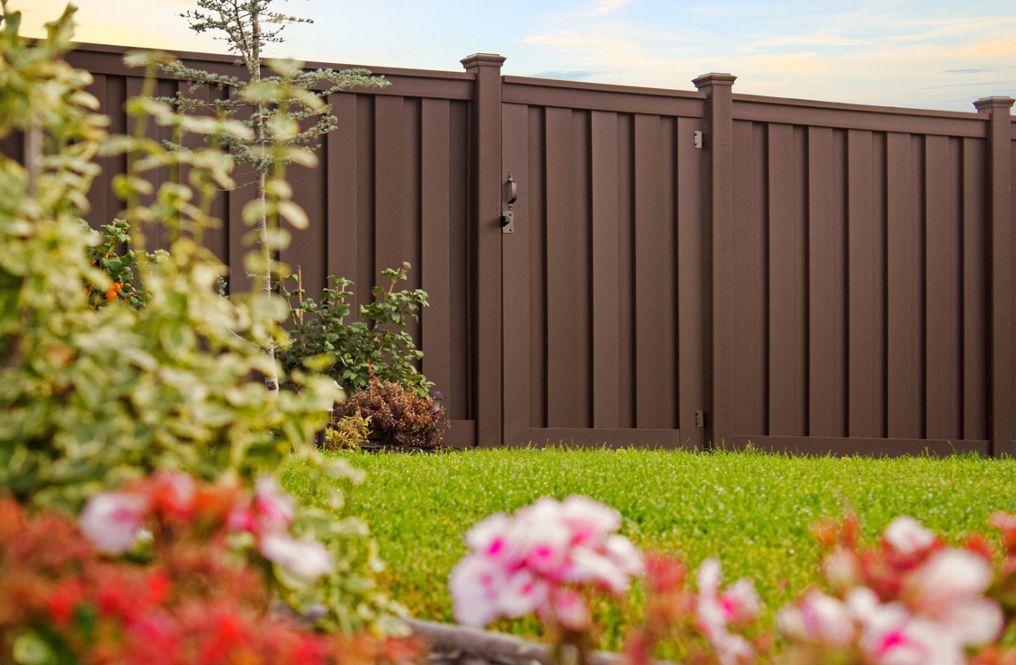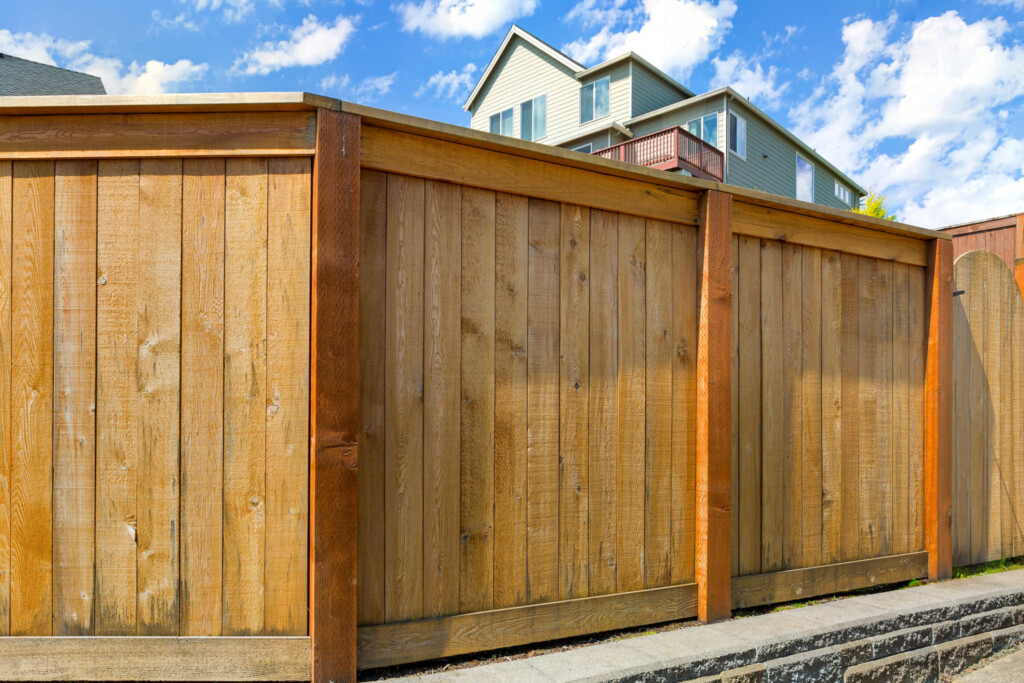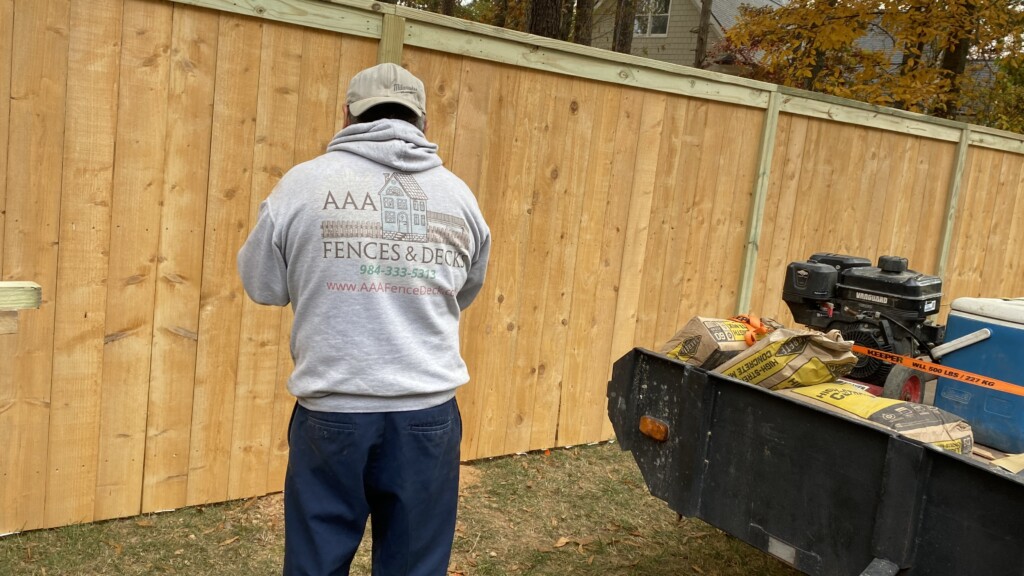In neighborhoods like Morrison Plantation, beauty and order define the community. Each fence line, pool edge, and sightline feels intentional, like part of a shared aesthetic code. But behind those clean edges is another kind of blueprint: fence and pool safety standards.
For homeowners, the challenge isn’t just meeting the code. It’s keeping your outdoor space beautiful while doing it. The goal? Safety without the sacrifice—because your home is a statement. And when it comes to designing fences that blend seamlessly with your pool or landscape, the trusted Mooresville fence experts know exactly how to balance safety with style.
What the Town and HOAs Require
Rules are straightforward but they leave little room for improvisation. Every fence and pool enclosure must meet both town and HOA standards, and sometimes those two layers don’t overlap neatly.
Under the North Carolina building code, pool barriers must rise at least 48 inches high, with no more than 2 inches of clearance at the bottom and openings smaller than 4 inches. Gates have to close and latch on their own, a detail many homeowners overlook until inspection day. These specs aren’t arbitrary; they’re designed to prevent small children or pets from slipping through.
The state incorporates these requirements directly into the permit process. You can’t pull a pool permit without addressing the barrier first—something clearly outlined by the North Carolina Office of State Fire Marshal. In other words, your fence isn’t just an accessory; it’s a permit requirement.
Then comes the HOA layer. Associations often tighten the rules beyond the town’s minimums—especially in high-value communities near Lake Norman. Expect restrictions on materials, visibility, and even post placement to maintain consistency and preserve the upscale appeal homeowners expect.
Maintaining Aesthetic Harmony in Mooresville’s Upscale Neighborhoods

If you’ve ever walked around Langtree Lake Norman or driven the winding streets near Brawley School Road, you’ve probably noticed how fences seem to disappear into the scenery. Nothing loud or clashing—it’s all by design. HOAs in these neighborhoods are as much about preserving atmosphere as they are about property lines.
While the town enforces safety, the HOA curates style. They’ll tell you which colors complement neighborhood architecture, which materials preserve lake views, and where fences must stop to maintain open sightlines. A wrought-iron design might pass in one subdivision but fail in another that favors composite or muted finishes.
For many homeowners, navigating those guidelines can feel like decoding fine print. Experienced fence installers manage the paperwork, prepare HOA submittals, and coordinate inspections so your project moves from concept to completion without delays or citations. It’s the kind of quiet expertise that keeps both the process—and your property—stress-free.
Premium Materials That Balance Safety and Design

When your backyard looks out toward Lake Norman, a fence shouldn’t interrupt the view—it should frame it. That’s why homeowners are leaning toward ornamental aluminum, Trex® composites, and wood-composite hybrids that deliver structure without bulk.
Aluminum is ideal for pool safety and waterfront homes. It’s lightweight, rust-resistant, and visually open. Composites suit newer developments where low-maintenance living is prized. Trex-style panels hold color through years of humidity and sun, and many HOAs list them as “preferred materials.”
Some homeowners still opt for natural wood—usually cedar or treated pine—but often pair it with black posts or aluminum rails to meet code while maintaining symmetry. The right mix depends on your home’s architecture and the aesthetic your community encourages. Whether you’re surrounding a lakefront patio or defining a pool deck, the guiding idea is the same: safety can still look stunning.
Look closely, and the best-designed backyards feel purposeful. Fence lines connect visually, creating the art of compliance-driven design: structure wrapped in subtle elegance.
Insider Advice from Reliable Fence Builders

Every HOA has its version of a “no-go” list, often longer than people expect. Common reasons fences get rejected? Wrong height, visible fasteners, non-approved stain color, or a design that breaks the neighborhood’s rhythm.
Picture a homeowner along Raceway Dr, proud of a new cedar privacy fence—until the HOA notice arrives citing non-compliance. The fix usually involves rebuilding sections or repainting to meet standards. A costly lesson.
Professionals avoid those pitfalls from the start. They draft shop drawings, include color samples, and communicate directly with review boards before installation begins. It’s a streamlined process that keeps homeowners from losing weekends to resubmissions.
Making Safety Look Seamless

A fence doesn’t have to announce itself. The best ones become part of the landscape—something you notice only when you stop and look. In pool settings, that subtlety is everything.
Designers now work alongside pool contractors and landscapers to integrate barriers early in the plan. The result? Fences that follow patio contours, blend with stone coping, or align with garden borders rather than cutting across them.
Along Williamson Rd, where lakefront homes demand open sightlines, homeowners often choose clear-panel or aluminum designs that nearly disappear against the water. Paired with low-voltage lighting and matching deck railings, the entire scene feels cohesive and calm.
If you’re exploring which style fits your community’s aesthetic, check out our related article on Mooresville neighborhood fence styles and take a closer look at how design language shifts between subdivisions.
And remember, the right fence should feel inevitable, as though it always belonged there. That’s what sets a well-planned project apart from a quick install. Meet the standards, honor the view, and let craftsmanship do the rest.
Local Experts in Compliance-Driven Design

When rules and creativity have to coexist, experience matters. For more than three decades, our veteran-led, family-operated team has been guiding homeowners through the maze of permits and HOA approvals. We’ve seen every code update, every fence fad, every neighborhood nuance and they know how to translate regulations into design.
Clients call because they want more than a fence; they want craftsmanship that lasts. With TrexPro certification, a BBB A+ rating, and a two-year workmanship warranty, our team delivers the kind of assurance homeowners expect. From aluminum pool enclosures to custom composite builds, each project is engineered for both beauty and peace of mind.
Thinking about adding or updating a fence this season? Call (980) 223-3313 or schedule your free design consultation today.
Frequently Asked Questions
Are glass or clear-panel fences allowed around luxury pools?
Yes—tempered glass and acrylic fencing meet pool-code height and latch standards while keeping lake and garden views unobstructed. In neighborhoods near Williamson Rd, these transparent designs have become a favorite for modern homes that want openness without losing safety certification.
How long does the HOA approval process usually take near the Fountains at Mooresville Town Square?
Expect two to four weeks, depending on design complexity and your HOA’s meeting schedule. Submitting scaled drawings, color samples, and latch details usually accelerates approval.
What fence materials perform best in a humid lake climate?
Humidity and sun exposure around the 28117 area make powder-coated aluminum and composite fencing smart investments. Both resist corrosion and fading while staying within HOA design guidelines. Many homeowners mix materials—aluminum near the pool, composite along property lines—for durability and style continuity.
Can a homeowner handle their own HOA submission, or is it better to use a professional?
You can file it yourself, but professionals streamline everything: from code checks to engineering drawings. They already know each neighborhood’s quirks and review cycles. For most luxury properties, that convenience outweighs the DIY effort. If you’re weighing your options, it’s worth scheduling a design consultation first.
